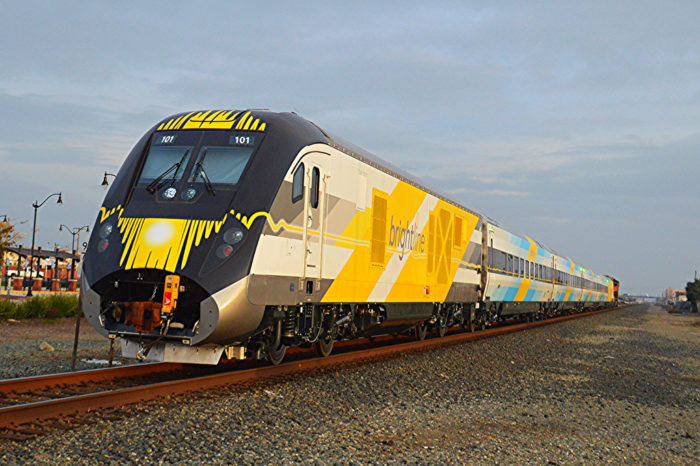The Numbers Are Staggering.

Since the first of this year, five people have been struck and killed by Brightline trains, the new rail passenger service running between Miami and West Palm Beach in Florida. And for the calendar year 2017, a total of 17 people died after being struck by Tri-Rail trains. That’s the commuter railroad serving Palm Beach, Broward and Dade counties.
I’m sure there are actuaries who can give us meaningful comparisons, all carefully weighted to provide apples-to-apples comparisons, but it’s hard to believe any metropolitan area anywhere could have a worse record.
The cops have an accurate breakdown, but my guess would be that about half the total were suicides. You really can’t help feeling compassion for people so driven by desperation and mental issues that they would step in front of a train. One cannot feel much sympathy for the drivers of the cars and trucks who misjudged the speed of the train and drive around the lowering gates at a grade crossing. Those who survived learned the hard way that a train is always traveling a lot faster than it seems from a distance.
But, please, let us reserve a generous share of our sympathy for the only truly innocent “victims“ of these horrific events: the head end crews of the trains that struck and killed those people. They see it coming and instinctively go into emergency stop, but it’s rarely enough. Massive weight … too much momentum … not their fault. But, unfortunately and understandably, it’s common for many of those engineers to seek help following one of these awful events. Some, in fact, are emotionally unable to go back to the job they love … ever.
What’s needed? Automated gates at all grade crossings. More education leading to greater public awareness. More and easier access to mental health counseling. And let’s stop blaming the railroads for the actions of careless or stupid or desperate or unbalanced people.




Hear hear! What also helps are separate grade crossings, such as bridges and tunnels, and the railway as much as possible fenced off. Because let’s be honest, people get more tempted to tempt fate if they fear they’re going to loose 10′ or more while waiting, with a bridge they won’t have to wait. But these are of course costly investments…
It’s a common policy to close crossings as much as possible, but if people are diverted onto an different route, especially pedestrians can be tempted to cross without a crossing if the diversion is too long. 3 miles by car is a thing of perhaps 5′, but on foot, it’s an hour extra… There, too, the right balance between accessibility and safety is important…